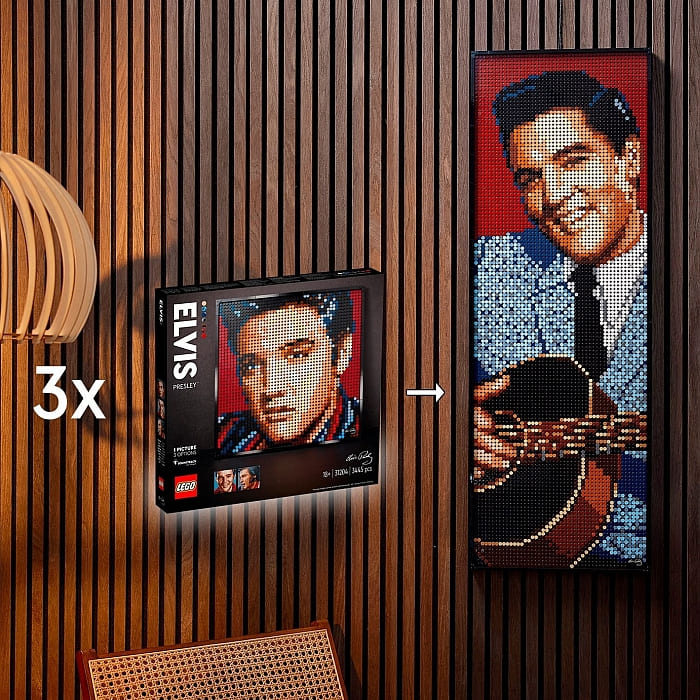The latest in the LEGO Ideas collection is the #21332 LEGO Ideas The Globe. It was originally designed by Guillaume Roussel, a 23-year-old LEGO fan from France, who was inspired by the tales of Jules Verne. Jules said that his goal was to build recognizable shapes of the continents with a nostalgic vintage touch. The dark-blue oceans, green landmasses, white ice caps, brown pedestal, and hints of pearl-gold helped to achieve the perfect vintage look.
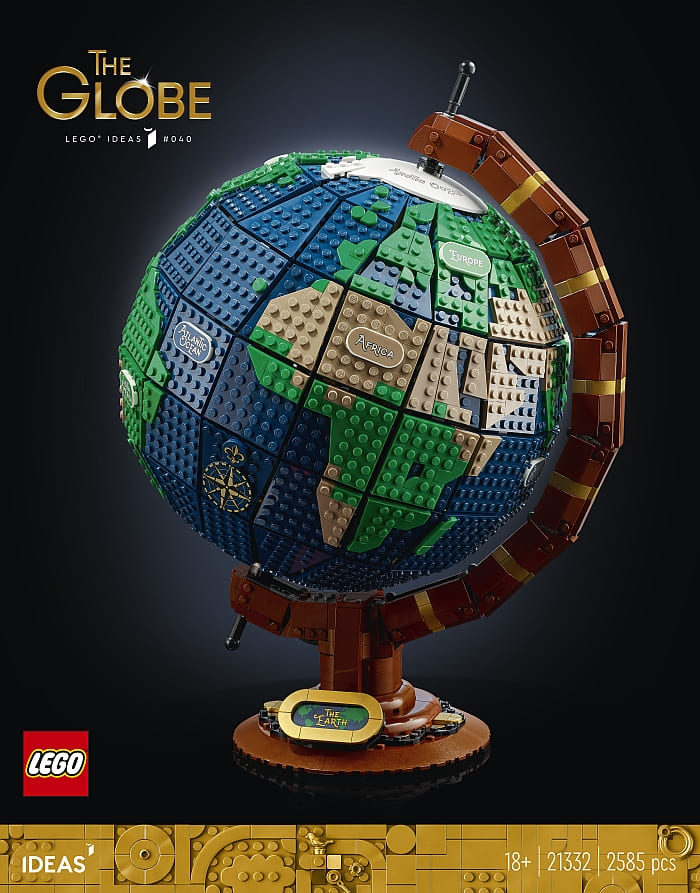
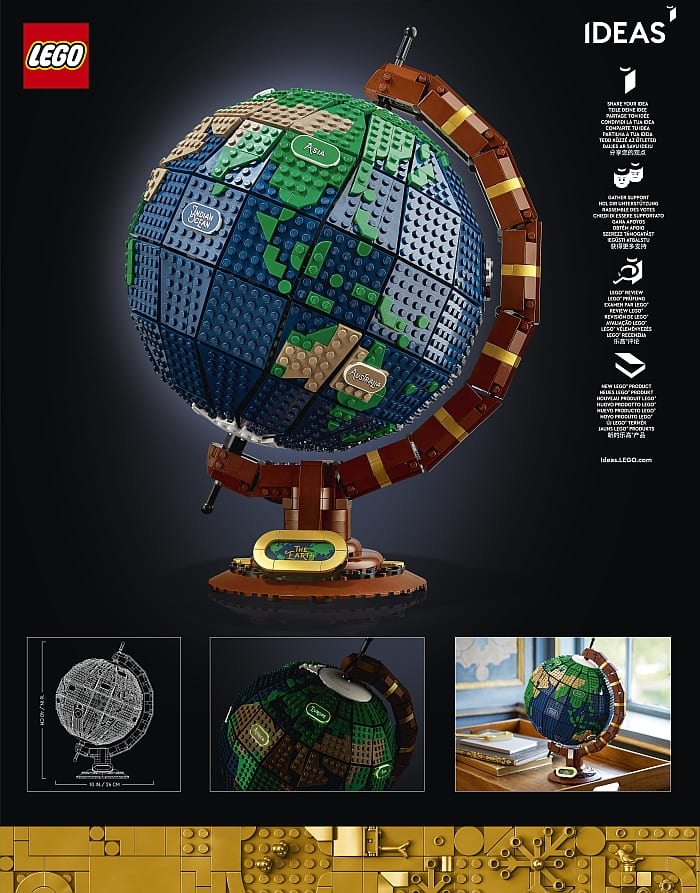
In fact, everything about this set has a classic feel. The box is elegant black with a gold band and gold logos, and the set featured from different angles and positions. The instruction book is also very nice with a bit of history about our planet, the first historic globe displays, the fan designer, and LEGO’s own designers who worked on the set. The information is just enough to satisfy curiosity with fun facts and figures, and I also appreciate the nicely laid-out pictures in this section.
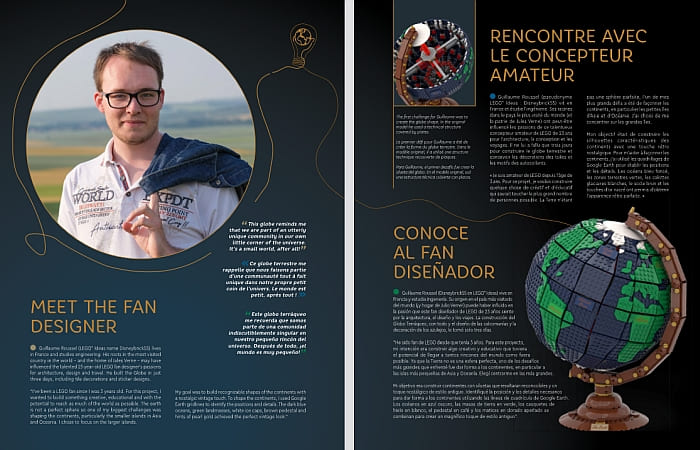

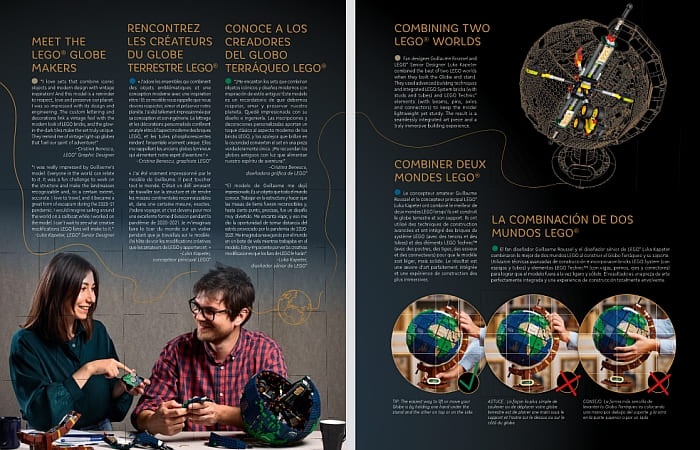
The parts are divided into sixteen sets of numbered bags. Bags 1-4 are for building the base and the arm that holds the globe. These are mostly brown elements with a bit of gold, black and gray. Underneath the base, there are some tire pieces to provide friction and to hold the globe in place when it is being spun. This is not the first time LEGO designers used this technique, and it’s a thoughtful touch.
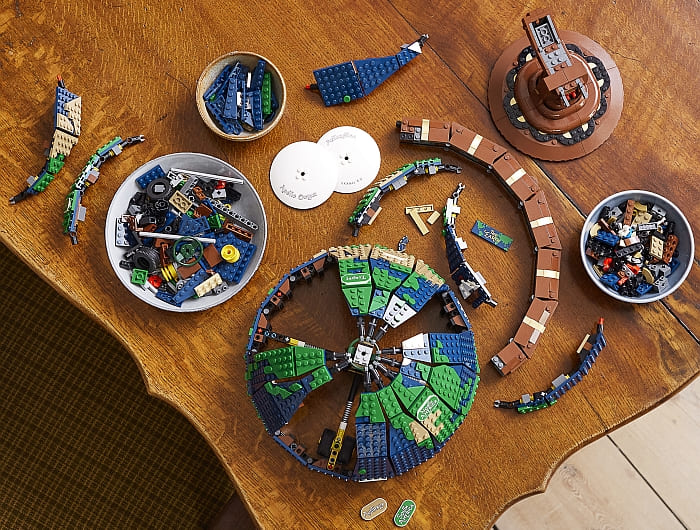
Building the base and the arm reminded me of working on the #21318 LEGO Ideas Tree House released a few years ago; building a strong core with brackets and sections that interlock from all sides and then covered with a predominantly brown outer shell to hide all the inner structure and to give the model its shape.

Bags 5-7 contain the parts to build the core of the globe that provides its structure and strength, and the central ring of the globe’s surface. All of these sections are interesting and engaging to put together and give us many lessons on building round objects with square pieces.
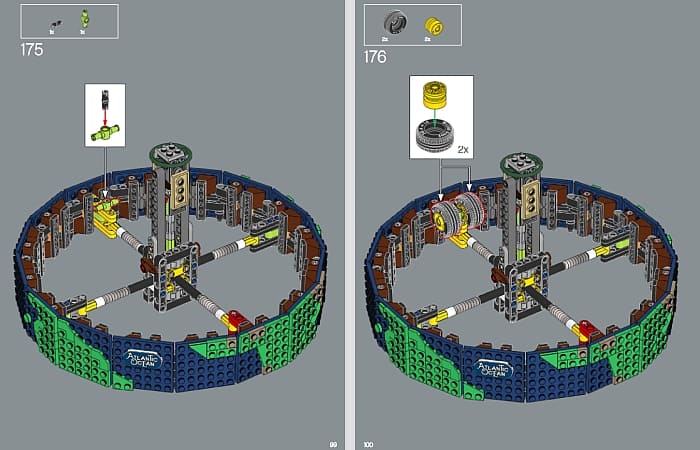
Bags 8-11 are for building the upper half of the globe, and bags 12-16 are for building the lower half, as well as for attaching the globe to the stand. Here, things get more repetitive, as you are instructed to build the outer shell with repeating sections. The dark-blue plates represent the oceans, and the landmasses use dark-tan and green plates and tiles. While the continents aren’t perfectly shaped, they are recognizable. I feel that LEGO designers did a good job following the outlines of the continents with small wedge pieces and curved plates and tiles.
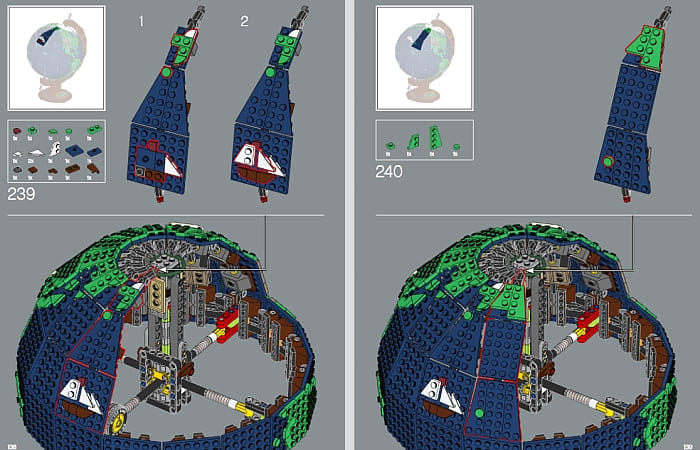
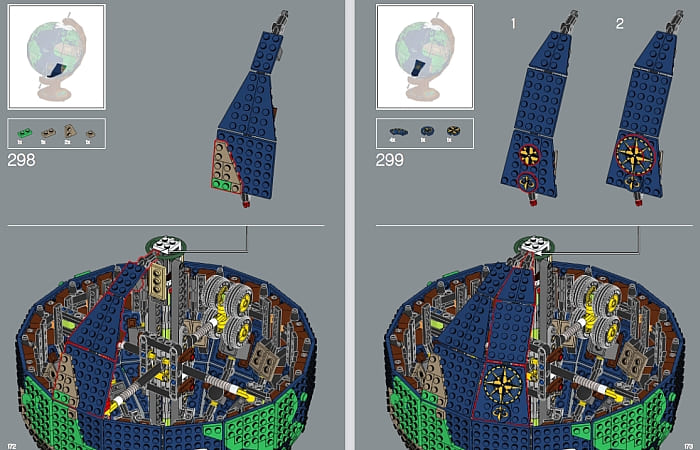
The continents are decorated with 2×4 plates with rounded corners and nicely designed lettering. These pieces glow in the dark, which is a nice surprise that wasn’t part of the original design. White dishes using ice caps are also printed.

While this set is mostly a display piece for adults, it does have some play functions that the entire family can enjoy. First of all, you can make the globe spin by twirling the knob around the top and bottom of the glove. This function works very well without any hiccups. Although this is not part of the set, you can definitely add little dots as markers to the places you visited, or plan to visit in the future. And you can also add more little ships or other micro-builds representing landmarks.
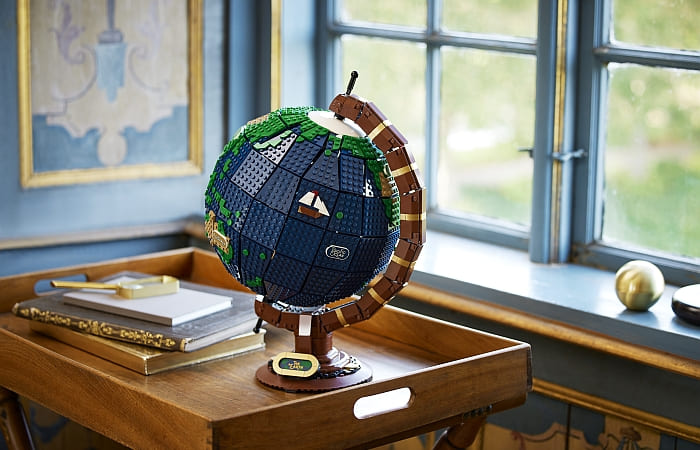
The overall size of the set is over 16 in. (40 cm) high, 11.5 in. (30 cm) wide, and 10 in. (26 cm) deep, and comes with 2,585 pieces. The substantial size, lovely color-scheme, and detailed decorations make this an ideal display piece. The parts selection includes those lovely printed elements, and it’s an interesting mix of LEGO Technic elements and LEGO System parts.
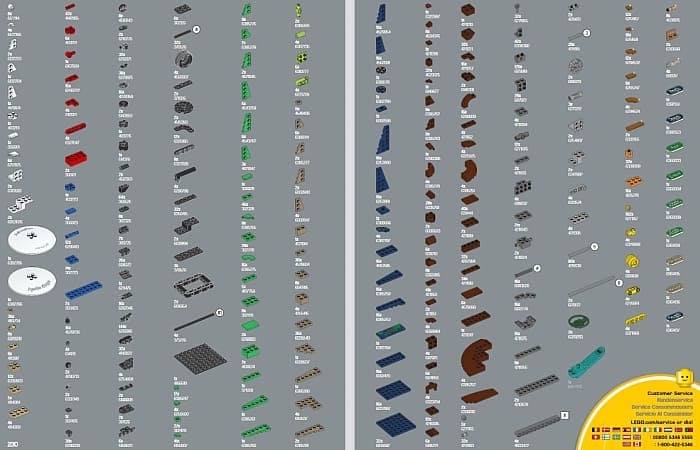
There are some features however that I don’t like as much. As mentioned, there are quite a few repetitive steps during the building process, which some people may find boring. The visible gaps between the plates could be considered unsightly. Although with the right kind of background and lighting this can be made less visible. Other than these issues, the set is solid, elegant, and worthy of display. And it would also pair well with the #31203 LEGO Art World Map mosaic and even the #92177 LEGO Ideas Ship-in-the-Bottle set from a couple of years ago.

Below, I have included a couple of video-reviews to give you additional opinions on the set to help you decide if you would like to add it to your collection.
If you appreciate LEGO display pieces, I do fee that the #21332 LEGO Ideas The Globe would make a nice decoration, and as mentioned above, it could also be made more interactive with a bit of creativity. If you would like to check it out, it’s available at the LEGO Ideas section of the Online LEGO Shop.

And you might also like to check out the following related posts:




